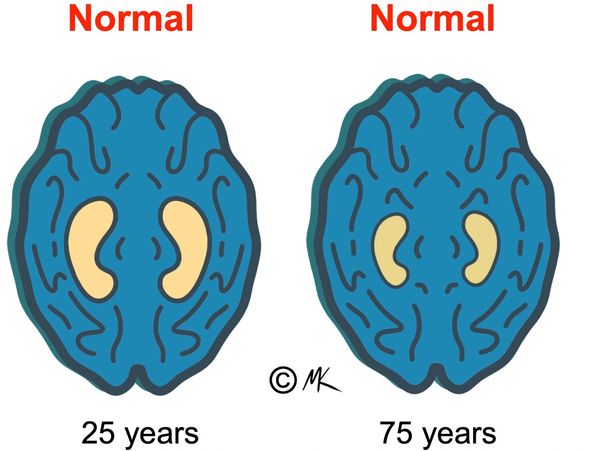Normal Brain Aging
The Hippocampus ('Sea Horse')
- Our brain, like other organs, undergoes many changes while aging. Genetics, diet, physical activity, metabolic diseases and cardiovascular changes are only a few of the factors involved in the process of aging. Up until recent years, the scientific medical community believed that we were born with a specific number of brain cells and that any brain damage was going to be permanent. In 1998 (1), it was discovered that a specific portion of the human brain, the hippocampus, was the center of precursor cells and that it was able to make new neurons.

Normal Shrinking
- The effect of age on the hippocampus is a 0.5% per year shrinkage starting at the age of 40 that depends on many factors including genetics, medical conditions, lifestyle habits and various external elements (2). Nevertheless, the hippocampus of older people continues to maintain its ability to produce new brain cells, even though these cells may have less ability to produce connections. The term 'neuroplasticity' defines the brain’s ability to change through growth, produce new cells (neurogenesis) and create new connections among neurons (3,4). In 2016, Merzenich received the 2016 Kavly Prize in Neuroscience "for the discovery of mechanisms that allow experience and neural activity to remodel brain function” (5).

Neuroplasticity
- Prevailing science now believes that our brain is indeed capable of creating new synapses if adequately stimulated, while also pruning old synapses if they are not used. This amazing process continues throughout our entire life under the right circumstances. Learning a new language, a new skill, a new instrument, a new sport, are all stimuli for new neural networks that, if exercised by experience, become stronger over time.
- Regular physical activity (6,7,8) and having a diverse social network (9) have been proven to stimulate and increase neurogenesis and neuroplasticity.

References
References
References
- 1. Eriksson PS, Perfilieva E, Bjork-Eriksson T. et al. Neurogenesis in the Adult Human Hyppocampus. Nature Medicine 4, n.11 (Nov. 1998).
- 2. Gupta S. Keep Sharp. Simon & Schuster Editor. 2021.
- 3. Neuroplasticity definition: Wikipedia, The Free Encyclopedia, 2021.
- 4. Fuchs E, Flügge G. Adult Neuroplasticity: More Than 40 Years of Research". Neural Plasticity. 2014: 541870.
- 5. "2016 Kavlu Prize in Neurosciences". 2 June 2016. Archived from the original on 5 June 2016.
References
References
- 6. Saint-Maurice PF, Coughlan D, Kelly SP, et al. Association of Leisure-Time Physical Activity across the Adult Life Course with All-Cause and Causa-Specific Mortality. JAMA Network Open 2, n/3 (March 2019):e190355.
- 7. Lieberman DE. Is Exercise Really Medicine? An evolutionary Perspective. Current Sport Medicine Reports 15, n.4 (July-August 2015):313-319.
- 8. NIH US National Library of Medicine online. Medlineplus.gov/benefitsofexercise.htlm.
- 9. Molesworth T, Sheu LK, Cohen S, et al. Social Network Diversity and White Matter Microstructural Integrity in Humans. Social Cognitive and Affective Neuroscience 10, n.9 (September 2015):1169-1176.
This website uses cookies.
We use cookies to analyze website traffic and optimize your website experience. By accepting our use of cookies, your data will be aggregated with all other user data.